INDIAN ARMED FORCES CHIEFS ON OUR RELENTLESS AND FOCUSED PUBLISHING EFFORTS

The insightful articles, inspiring narrations and analytical perspectives presented by the Editorial Team, establish an alluring connect with the reader. My compliments and best wishes to SP Guide Publications.

"Over the past 60 years, the growth of SP Guide Publications has mirrored the rising stature of Indian Navy. Its well-researched and informative magazines on Defence and Aerospace sector have served to shape an educated opinion of our military personnel, policy makers and the public alike. I wish SP's Publication team continued success, fair winds and following seas in all future endeavour!"

Since, its inception in 1964, SP Guide Publications has consistently demonstrated commitment to high-quality journalism in the aerospace and defence sectors, earning a well-deserved reputation as Asia's largest media house in this domain. I wish SP Guide Publications continued success in its pursuit of excellence.
ISRO – Leading India's Space Odyssey
In the most comprehensive account of Indian space, its tech advancement, and its futuristic missions, Manish Kumar Jha speaks with S. Somanath, Chairman, ISRO, distinguished Scientist & Secretary, Department of Space.
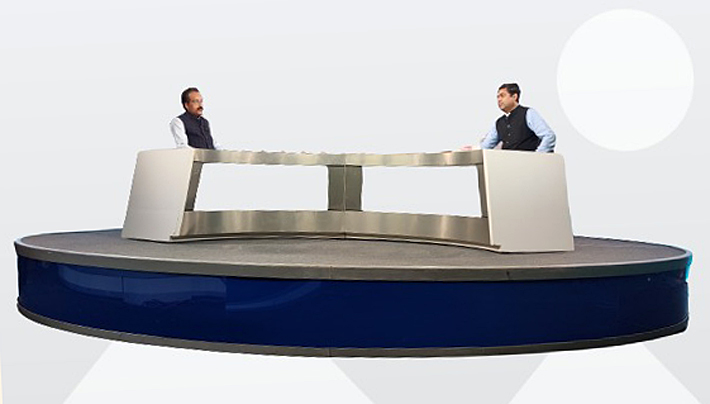
Indian Space exploration is certainly moving now in a new era with such complex missions like Gaganyaan and further exploration as far as the Sun through the Aditya L1 spacecraft. However recent breakthroughs in small satellites bring the spotlight on space tech for civil and military. In fact, this is also about Indian private space entities working for futuristic space tech for the military and commercial arena.
On such a significant issue of national importance, Dr Somanath has led some of the key national initiatives on space - Driving National Space Policy, facilitating IN-SPACe activation, and engagement of ISRO with start-ups in the space sector. Most notably, he is pushing boundaries for Indian space startups for commercial activities including Launch Vehicle production among other initiatives. Here are excerpts of the interaction:
Manish Kumar Jha (Jha): Give us an overview of India's Space policies and how you look at Space Vision 2047. And give an overall idea of your vision of space in India at that time.
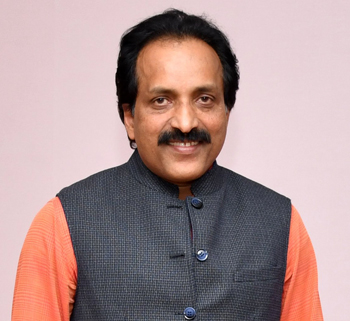
S. Somanath, Chairman, ISRO (Dr Somanath): There was an announcement by the government in 2020 about the space sector reforms which look at this entire space ecosystem in this country, the National Space actors like ISRO & then we wanted to bring in more and more private investment in space and bring more and more non-governmental entities into the space sector and facilitate them through the investments which are already done in the sector through our governmental investment. Also, to provide a level playing field for all those who want to work in the space sector or any aspect of it, whatever may be the area.
So, this idea of the reform has been converted into a policy by 2023 and the space policy came out where the roles of different entities have been well defined. ISRO with its national space capability and research capability will continue to work on advanced technology and research. They have developed over the years which is into production and operation. We move over to private entrepreneurs who want to use it for developing its ecosystem and all those facilities that have been created in ISRO, will be also made available to those who want to develop Technologies or new systems in India.
"The Space Policy 2023 outlines clear roles for entities like ISRO, IN-SPACe, and NSIL, fostering private sector growth in space activities, including satellite operations and commercial applications."
Also created an entity called In-Space, where the new actors, private actors are coming in. The space is a regulated area because of international commitments and needs authorisation. So, this authorisation aspect will also be handled by In-space, especially with regards to launch vehicles, building, satellite launching and the management of orbital resources, which are very controlled. Then we also empowered NSIL, the New Space India Limited to handle the commercial operations, especially operating the satellites which we own. National Assets will now be over-operated by NSIL for commercial space. They will also aggregate the demand from different users and build systems that could be satellites, launch vehicles, and applications and deploy them on a commercial basis.
Then, with this, we also handle all the new startups and companies who are coming up and to help them to onboard the various activities, help them to promote this, and connect all the industries that are created as an ecosystem or supply chain upgrade them to become builders of Integrated Systems over a long period.
So, this is an essence of Space Policy 2023 and through this process what we achieve is the growth of our space economy, from the present level to a higher level which will be defined as part of the space assessment of which all thing spaces do.
Jha: You have well explained the space roadmap and plan under this mission but I would also like to know some futuristic technologies which put you ahead, in the world possibly by 2047, backing space boundaries. If you could talk about some other technology which ISRO is trying to put through under definition beginning with the quantum applications and AI in Space?
Dr Somanath: So, what we did in the past has been basically to bridge the gap that existed between us and the other developed nations in space. We have so far achieved that type of bridging the gap and are reaching somewhere closer to their skills and capabilities, which is very clearly demonstrated by our ability to go to Mars where we first launched successfully, to land on the moon, then our effort to build human space flight capability, but that's just not enough.
"We have 52 satellites in space right now, but as a nation, that requires services on various fronts, our number of satellites need to be increased many times."
We need to go much, much far in terms of Technology capability. You mentioned Quantum. It's one of them in terms of secured communication protocols and capabilities, but what is more important is to have our enhancement of the infrastructure that is available in space. For example, we have 52 satellites in space right now, but as a nation, that requires services on various fronts including communications, observation, navigation, science, our number of satellites need to be increased many times. Our launch cycle has to come down over a period of time so that it becomes more profitable and economical to launch more satellites. Our services in this country have to reach large segments of society than the five per cent it is serving now because ours is a huge country. We still have untapped potential in terms of applications.
So, all these mandate us to scale up the operations. The scaling up will happen through many activities. Of course, one of them is the technology development you mentioned about it. We have many technologies currently under development. I must tell you that in ISRO, we have almost 2,000 different technology development programmes currently going on which includes Gaganyaan-related centric technologies, building our ability to go and land on moon with the human beings at some point in time.
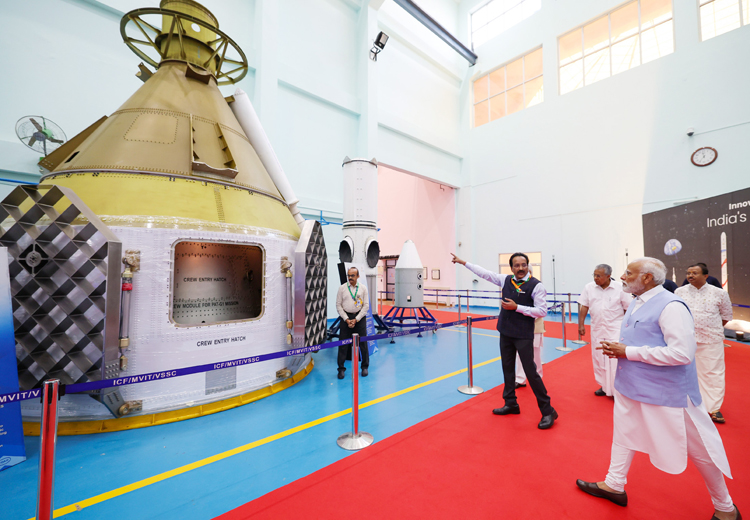
It requires new launches, green propulsion development, related materials and technologies development, higher levels of integrated electronic system development, new materials development, new propulsion technologies, including electrical propulsion and others. So, the list is a huge list and some of them are enabling technologies. Some of them are products that will come out of it.
Jha: Dr Somanath, I also would like to bring your attention to some particular aspect of development in space which is perhaps seen as a game changer. I begin with the latest breakthroughs in small and advanced multi-sensor satellites which open further ground for critical hyperspectral imaging in Indian space. What are the possibilities that you see unfolding on Small Satellites?
Dr Somanath: See, this small satellite is something happening today. It started in the West sometime back. Earlier, we used to make satellites which were a few tonnes in mass, especially in the nano communication systems, and they will continue to be of that nature. But when you look at Earth observation, there is a revolution happening in terms of bringing down the cycle satellite, some substantially lower, especially because of the last constellation concept that has come. And the ability to miniaturise is because of electronics miniaturisation and using commercial official components then high-grade electronic components.
"In ISRO, we have almost 2,000 different technology development programmes currently going on which includes building our ability to go and land on moon with the human beings at some point in time."
So, it allows you to build satellites at a very fast pace with high advanced electronics than traditional electronics. So, it allows you to miniaturise it and also software which is much more powerful than in the past which allows you to do the pre-processing a better. So, the entire process integrates into a small footprint and makes small satellites.
You mentioned multi-sensors, for example, the optical which is like a normal human eye seeing, the visible spectrum or near-infrared or ultraviolet. We can go further into the spectral and then see objects in greater detail and classify them based on the spectral characteristics. This is precisely the Hyperspectral imaging.
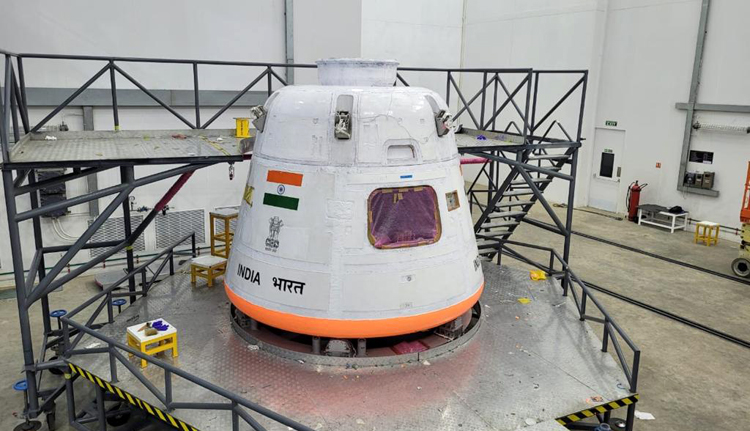
We also have radar imaging which allows you to see through an area when there is no illumination. So, when you merge the optical and radar you come with multi-sensor fusion capability, an imaging capability to see through materials, see through the covers or camouflage etc. It enables you to identify objects much better. So, these new technologies that you put in a small footprint are impressive. I must tell you that Indian startups and companies are creating innovation in this direction, building them into space.
Jha: Dr Somanath, is it a big opportunity for the Indian defence startup? Let's talk about Private companies in Space, including startups.
Dr Somanath: Lot of areas I must tell you, essentially the small circuit, allows us to now put a larger number of satellites. So, when you have a large number of satellites in multiple orbits, you get a much faster revisit. For example, satellites move very fast and over the surface of Earth they allow visibility over a few minutes. But then once that is over, next satellite should come and take on its place so that we have continued visibility something called persistent visibility.
How fast you can see the event again, it's a question called revisit. If it is one hour, it is very good. If it is 10 minutes, it's much better. But this is possible only with a large number of satellites. So small satellite allows you to build such a large constellation. This is one advantage.
"We are not short of launchers. But what we are in short, is cost-effective launching to support the small satellite industry."
The second advantage is that we have new technologies, which allow you to do onboard processing. The images collected may not be downloaded immediately. It can be processed onboard using computing and artificial intelligence and send only those with essential features to the ground, so that you can communicate with less power and faster communication. Another advantage of satellite communication is a new technology which is coming up that they will communicate either through an optical or hour of means and this will enable them to task one action. Suppose, if one satellite detects something the following satellite can do the continued activity of looking at that spot and create more data.
So, when you have a large number of satellites with that type of interception communication, it's computing capability, decision-making possibilities etc, it enables you to do real-time Imaging and give very strategic information.
Jha: Also contributes to telecommunications in a big way by reaching last mile connectivity efficiently using multiple small satellites?
Dr Somanath: This is happening elsewhere. It has not happened in India, for example, Constellation like the Star link or the One web. It is an example of low earth orbit or medium earth orbit constellations, which will provide high throughput communication capability like Indian communications systems.
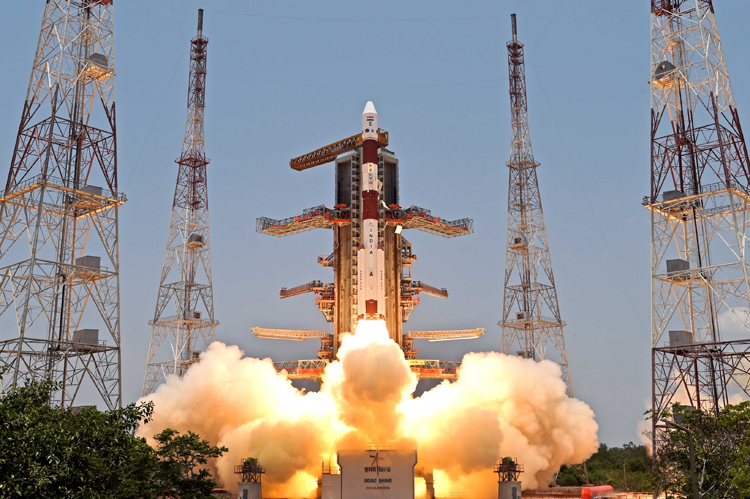
So, it is again another concept in which you can see that a handheld device will be in a position to directly receive satellite communication through satellite communication with low latency. For example, you know when you have a GEO satellite, there is communication that is not that instantaneous. It has some time delay in coming. It's called high latency communication when you have a lower orbit, you get a very near real-time or a high very low latency service.
So, this is also another area for Constellation but then you should understand that such constellations are not region-specific they are global.
Jha: And how these private players can launch because I understand and the world knows that ISRO has been launching complex and large satellites, but do we have enough launching stations and what do we need to boost infrastructure to have such a constellation of satellites, and to have that scale of advantage to our industry and various sectors in the economy?
Dr Somanath: Currently, we have launch capabilities adequate in India in terms of big satellites. For example, we have PSLV which can launch 1- tonne plus satellites. We have LVM, which can launch 4-tonne-plus of satellites. We have SSLV which can launch a satellite up to half a ton or less. So, launchers are there. And their production has to be enhanced. So, we are not short of launchers. But what we are in short of, is cost-effective launching to support the small satellite industry. So that is what is happening currently in the space sector when new private companies are coming up like the Skyroot. They are launching at an affordable cost which is a welcome step.
Jha: I want to focus on futuristic technology and some of the international collaborations of ISRO around the world which bring a new depth of ideas. For example, the Space Situational Awareness Data Sharing Pact with the US in 2022 with enable Department of Space to collaborate with the Combined Space Operation Centre to protect the space-based assets of both nations from natural and man-made threats. Could you talk about such indigenous efforts?
Dr Somanath: Absolutely. I think, what you mentioned about Safety and Security of the space assets is paramount today. As a nation, with huge assets up there, we must pay attention to its security, in the scenarios where you don't want mishaps to happen. You must be able to watch what is happening to our satellites, especially concerning its safety and its interventions that someone else may do in terms of observing it or incapacitating it. For this, we need to have continuous observation of the satellites not just the signals but physical observations through telescopes and radars.
"As a nation, with huge assets up there, you must be able to watch what is happening to our satellites, especially concerning its safety. For this, we need to have continuous observation of the satellites not just the signals but physical observations through telescopes and radars."
So, we also develop capabilities to predict what is happening by patterns of movements and things like that around our satellites to safeguard them. So, this also requires that not only we observe our satellites, we should also observe other objects around it which go into thousands of them and, create mathematical and modelling capabilities in this project.
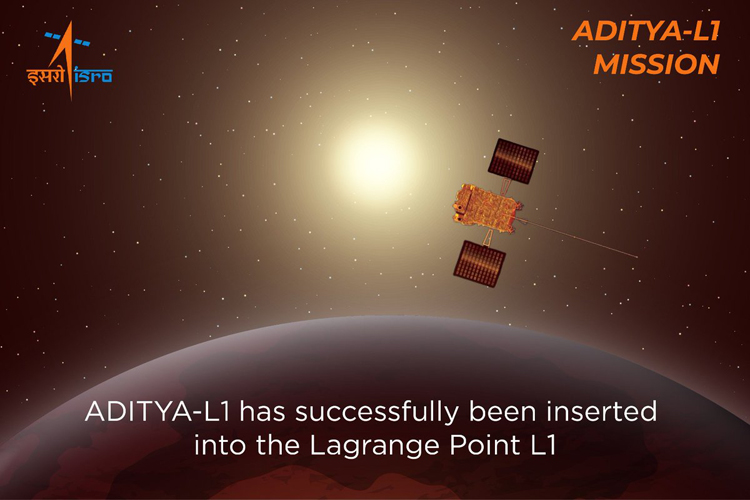
To predict, doesn't come from some observation alone. Observation is data is one part but using this data to make what we have a predictive technology AI for AI computational capability and modelling capability. All this currently we have. I think this strength we want to make use of. What we do not have today is observational capability. We do not have ground stations. Optical stations radar to observe. All of them, we are trying to build them over some time and create those capabilities.
Jha: I also want to focus on some of the complex areas like propulsion systems. An air-breathing propulsion project with reusable capability is yet another key futuristic tech breakthrough unfolding. Could you talk about it? What does it entail, how futuristic this technology is for India and how far we have succeeded in testing?
Dr Somanath: Rocket Propulsion Technologies are closely guarded, you know. We have been well benefited by our collaboration with the others in the past. To understand the external engine technology with the Russians, we benefitted from that, but beyond all of them, we developed our own. We are developing newer engines now on our own. They are very powerful engines that we have right now. And in terms of solid propulsion, we have mastered this much earlier and we have some of the biggest and the world's largest – only a few of the solid Motors ever made in the world--are somehow owned by us.
In the future, we want to do many more things. We are working on greener propulsion of the 100-tonne class. We are working on air-breathing propulsion to help us build reusable Rockets. We are building Rocket engines which will work on, interplanetary missions. We are working on electric propulsion. We are working on nuclear-assisted propulsion. So, many of these technologies we will develop on top of what we have.
Jha: How important is the indigenous development of Semi-cryogenic propulsion systems and what will they unfold? How futuristic is the technology?
Dr Somanath: Semi-cryogenic is not a futuristic technology. Semi-cryogenic is more of a traditional capability which existed in the 1960s onwards. It's nothing new, but we were not knowing it. So, it is basically to understand and do it ourselves, because semi-cryogenic offers reusability. It also offers a high mass-to-thrust capability we call density. Compared to storable, it is better than cryogenics as far as boosters are concerned, because of that we would like to go with the semi-cryogenic technology.
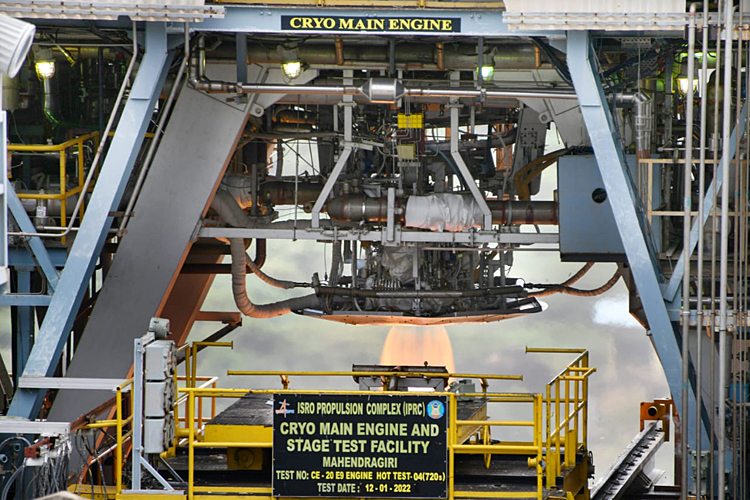
Jha: Dr Somanath, of course, I also understand your focus has been expanding 'The Horizon' of the space industry to the Private Industry. What are the key focus areas that the ecosystem needs for a higher stage of indigenisation in the underlying supply chain of the Indian space sector? What are the areas in which they can sustain, grow and do in small satellites and their applications in civilian and defence?
Dr Somanath: A lot of things are required. For example, how much we are dependent on others. We must be able to fully understand that first. If you look at the Rockets. We were only 30 per cent indigenous when we started the process. Today we are 95 per cent indigenous. In terms of materials, propellant and all sorts of things that go into rocket building, only five per cent of the items which includes electronic chips and processors we buy.
"We are working on greener propulsion of the 100-tonne class. We are working on air-breathing propulsion to help us build reusable Rockets. We are building Rocket engines which will work on, interplanetary missions. We are working on electric propulsion. We are working on nuclear-assisted propulsion."
However, when you talk about spacecraft, 50 per cent of it is still imported because spacecraft are essentially electronics intensive because of that most of the electronics and systems that go into it are purchased from outside in parts. But we can use the parts and develop all of the systems itself. But the parts making is slightly different than the commercial electronics. The commercial electronics in indigenisation programmes now started, especially the chips making etc, but making it for space requires another approach.
So, one of them is like building Detectors of various classes, you mentioned hyperspectral, thermal and many other pan detectors, scientific detectors, and memory devices, which are higher reliability-rated microcontrollers.
Also, the equipment and devices have to be designed over some time. So, we are working on it while the commercial electronics industry grows. This also should grow, especially micro fabs, mini Fabs of various natures are to be built in another country. Especially, this will also become a challenging issue for even startups who are building small satellites. All their equipment and components are even purchased from outside. So, we need to create an ecosystem for that also.
Jha: So how the R&D in deep tech could be catalysed for the larger industry? If you have to broaden the scope of space R&D beyond ISRO and to the private sector. Is it a policy thrust? Is it a PLI scheme for young startups to take the plunge into R&D set-up because it's a high investment area and a longer gestation period, which you have also mentioned?
Dr Somanath: Fundamentally, this issue is because of the high investment-- it's a moderately high investment, but the issue is a long gestation period. The investment gets locked for a long time until you develop something to go to the market and begin to profit. It takes a long gestation period so the cost of capital becomes very high. And Profitability, again, the function of the success you are likely to achieve is possible or not possible so that is a high amount of risk. So, this risk-taking capability is one that we need. For them, we need to have a support system in the government. So, we identified these issues. Creating new markets for them and creating a sustainable supply chain for them so that they are assured of some comfort at this moment before they start investing in it is essential.
Jha: Now on India's national mission. Gaganyaan is expected to source nearly 60 per cent of its equipment from the Indian private sector. What is the breakthrough advancement here and if you could further highlight the ongoing preparation?
Dr Somanath: A lot of things are coming out for Gaganyaan. We are now going through the first unmanned mission capability. The rocket is fully ready, and the crew module, where the people will travel is getting integrated now, so we are hoping to have the launch this year before December. And this will be the first to set the stage for a full-fledged end-to-end demonstration. After that, we have to repeat it with the higher levels of integration of systems in the first mission. We will be sending earlier about half a humanoid, but we will have to propagate that activity to much higher levels of integration leading to the human space flight with the time frame and the framework.
"The Indian Space Station announcement has now been converted into engineering details of how the space station should look like, what are elements of the space station, what type of technologies we need to develop and what type of launches we need to accomplish."
I won't give a time frame at this moment. It all depends on the success of that we have put. We have put a timeline for our missions. However, when the human being will go, is a function of how successful we are in all those missions. Then we are also working on the Space Station.
Jha: What about the Indian Space Station? Feasibility and time frame?
Dr Somanath: The space station is an announcement that was made a few months back. We have now converted that announcement into engineering details of how the space station should look like, what are elements of the space station, what type of technologies we need to develop and what type of launches we need to accomplish. This also has been fully outlined now and we are going to the government for seeking approval.
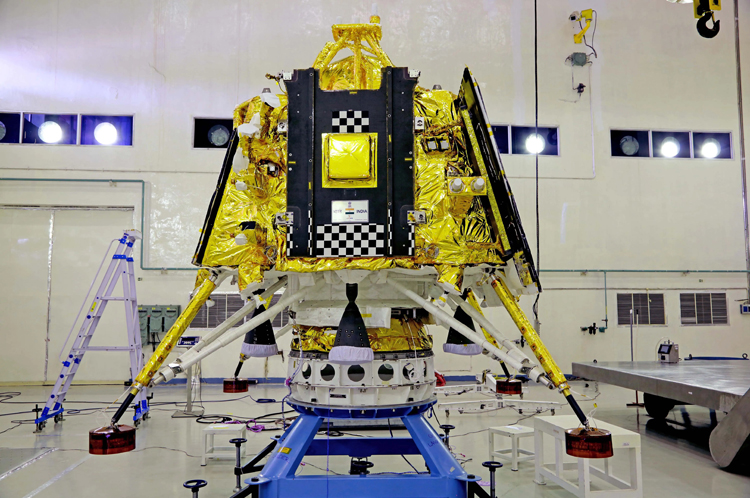
Jha: Lastly, on the Chandrayaan-series?
Dr Somanath: Chandrayaan was successful in terms of landing, but now it has to come back to earth and we are looking at how it can come back to earth. So, the next series of Chandrayaan will be the one which will go land and collect something ---scientific outcome-- and then come back and retrieve that specimen is important. This is a precursor to actual human beings going over there and coming back. The methods of doing it will be evaluated and demonstrated through a series of Chandrayaan missions leading to the humans going there, doing experiments and coming back at a later point. So, we are working on that also.
Thank You!
Manish Kumar Jha is a Consulting & Contributing Editor for SP's Aviation, SP's Land Forces and SP's Naval Forces and a security expert. He writes on national security, military technology, strategic affairs & policies.





